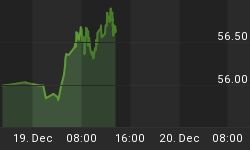Gold Forecaster - Global Watch
Below is a snippet from the last week's issue from www.GoldForecaster.com | www.SilverForecaster.com
Central Bank Gold Agreement
As at the 2nd November 2007
Central Bank Gold Agreement 2004-2009 | ||||||
| Selling Signatories | Announced Sales 2004-2009 | Year 1 Sales | Year 2 Sales | Year 3 Sales | Year 4 Sales | Announced Sales Remaining Balance |
| E.C.B. | 235 | 47 | 57 | 60 | 71 | |
| Germany | 12 | 5.4 [for coins] | 5.3 [for coins] | 5 [for coins] | 0 | |
| France | 600 | 115 | 134.8 | 99.2 | 251 | |
| Netherlands | 165 | 55 | 67.5 | 14 | 28.5 | |
| Portugal | 200 | 54.8 | 44.9 | 0 | 100.3 | |
| Switzerland | 380 | 130 | 0 | 113 | 138 | |
| Austria | 90 | 15 | 13.7 | 7 | 54.3 | |
| Sweden | 60 | 15 | 10 | 9.4 | 25.6 | |
| Spain | 0 | 30 | 62.5 | 149 | ? | |
| Belgium | 0 | 30 | 0 | 0 | ? | |
| Not Identified | ? | 27.50 | ? | |||
| Total Sales | 1730 | 491.8 | 390.4 | 475 | 27.50 | 657.5 |
| Russia | 0 | 0 | 0 | 22 | ||
| Greece [Coins] | 0 | 0 | 0 | 3.8 [?] | ? | |
| Total Purchases | 0 | 0 | 0 | 25.8 | ? | |
Notes to table:
- This now includes the unannounced sales for both years from Spain & Belgium, which totaled 177.1 tonnes for the two years.
- We have excluded the unannounced sales from the totals so as to retain accurate levels of decline in announced sales.
- Germany's sales were for coins, which we do not regard as part of the announced sales for the purposes of this situation.
 The remaining sales for individual countries will be corrected once the three monthly figures are available. The total is the most accurate figure, but will be adjusted then too.
The remaining sales for individual countries will be corrected once the three monthly figures are available. The total is the most accurate figure, but will be adjusted then too.- Switzerland's additional 250 tonnes to be sold has been included.
- We have now included Russia's purchases for last year.
In the week ending 26th October 2007, the decrease of €126 million in gold and gold receivables reflected sales of gold by two Eurosystem central banks (consistent with the Central Bank Gold Agreement of 27th September 2004) of 7.25 tonnes approximately.
What looks to be persistently high gold sales by the signatories of the Central Bank gold Agreement in the first month of the fourth year of the five year agreement, we contemplate what lies ahead for the agreement and the sales from there. It would seem that the Swiss are the larger of the two sellers, with either the French or the European Central bank as the other seller. If the past is indicative of the present, the Swiss will continue selling at this pace until they have completed their sales in the first quarter of next year. Each week of these high sales gives us more certainty on that. A look at the Table above paints a dramatic picture of the sales going forward into the new year.
We would ask you to look at two features on the table: -
- The tonnage remaining for sale is now down to just over 650 tonnes and we have two more years of sales still remaining. Granted, more announcements can be made but we only expect unexpected sales from Spain to the extent of 100 tonnes.
- We know that the remaining Swiss sales are around 6 - 8 tonnes a week with only around 100 tonnes remaining, so we guesstimate around 17 or less weeks before these sales are exhausted, leaving a potential 650 tonnes remaining including the Spanish 100 tonnes.
- If the Spanish repeat their past performance their sales will be out of the way by May of next year, leaving 550 tonnes for the duration of the agreement [16 months, if the announced sellers do actually sell?
- Portugal did not sell last year so may not sell any more, taking 100 tonnes out of this 550 tonnes leaving 450 tonnes for the duration.
- The balance of the announced sellers have set a pattern of steady sales spread over the years. With present demand failing to dent the rise of the gold price it seems likely that such a drop in sales will add impetus to future price rises.
 The second dramatic factor in the tables above are that in the final quarter of the C.B.G.A year Russia began its long awaited purchases of gold for its reserves. As we forecast these took the form of buying local production before it hit the open market. President Putin made it clear to te Russian Central Bank that he wanted gold reserves up to 10% of reserves, but has not been obeyed to date. The start of these gold purchases signals that this policy may have begun. If so, Russian production at just over 200 tonnes to 250 tonnes a year will be the initial target of the buying. This is important because at a time when new gold supplies to the market are set to fall after next year, such buying can be taken off the above sales. So whether it is 88 tonnes [based on the above] or the entire 200+ tonnes Central Bank supply to the market would net out at a potential 200 to 0 tonnes in the next two years!
The second dramatic factor in the tables above are that in the final quarter of the C.B.G.A year Russia began its long awaited purchases of gold for its reserves. As we forecast these took the form of buying local production before it hit the open market. President Putin made it clear to te Russian Central Bank that he wanted gold reserves up to 10% of reserves, but has not been obeyed to date. The start of these gold purchases signals that this policy may have begun. If so, Russian production at just over 200 tonnes to 250 tonnes a year will be the initial target of the buying. This is important because at a time when new gold supplies to the market are set to fall after next year, such buying can be taken off the above sales. So whether it is 88 tonnes [based on the above] or the entire 200+ tonnes Central Bank supply to the market would net out at a potential 200 to 0 tonnes in the next two years!
There are great pressures on Central Banks now to stop the sales og gold and to follow the example of Russia. The prospect of currency crises is growing by the day, and spreading fear of the value currencies will have gong forward. In the past such pressures have forced Central Banks to turn buyers of gold.
As the latest example of such pressures we include this report from Hong Kong.
Currency pressures to buy gold - The Hong Kong $
With the $ waning fast and currency pressures across the globe, never has there been a time when investors have needed safe-havens for their wealth. At the front of these sits gold and later silver. Many feel that the pressure may be short-term, but we believe it is systemic and growing worse by the day. As the hemorrhaging of U.S. $ across the world continues, smaller Central Banks are fighting to stop their currencies from rising so as to protect the competitiveness of their own currencies. If the pressure persists these banks will be forced to take more regulatory measures such as imposing controls on inflows. The latest reported incident of these is in Hog Kong.
 Hong Kong's de-facto central bank stepped in four times last week to defend the Hong Kong dollar's peg to the U.S. dollar, injecting about $800 million worth of local currency into the red-hot market. The Hong Kong Monetary Authority injected a total 6.2 billion Hong Kong dollars ($800 million) into the market. As the U.S. $ weakens so this intervention will continue. Under Hong Kong's currency board system, the Hong Kong $ is pegged at 7.80 to the U.S. $ but is allowed to trade between 7.75 and 7.85. When the Hong Kong dollar reaches the limits of its trading band, the monetary authority can be expected to intervene. With the cut in U.S. interest rates this week more upward pressure will come onto the HK$. By intervening, Honk Kong releases more local currency, so importing inflation and allowing more 'hot' money into their system. Such investments can leave as quickly as they arrive contracting money supply when they leave, bringing instability and eventual loss of control over the money supply should such actions reach extremes. Inflow Capital Controls are another way of coping with this problem or a strong revaluation of the currency and a departure from the $ peg.
Hong Kong's de-facto central bank stepped in four times last week to defend the Hong Kong dollar's peg to the U.S. dollar, injecting about $800 million worth of local currency into the red-hot market. The Hong Kong Monetary Authority injected a total 6.2 billion Hong Kong dollars ($800 million) into the market. As the U.S. $ weakens so this intervention will continue. Under Hong Kong's currency board system, the Hong Kong $ is pegged at 7.80 to the U.S. $ but is allowed to trade between 7.75 and 7.85. When the Hong Kong dollar reaches the limits of its trading band, the monetary authority can be expected to intervene. With the cut in U.S. interest rates this week more upward pressure will come onto the HK$. By intervening, Honk Kong releases more local currency, so importing inflation and allowing more 'hot' money into their system. Such investments can leave as quickly as they arrive contracting money supply when they leave, bringing instability and eventual loss of control over the money supply should such actions reach extremes. Inflow Capital Controls are another way of coping with this problem or a strong revaluation of the currency and a departure from the $ peg.
The Hong Kong $ has been rising against the U.S. $ as investors pour money into the soaring Hong Kong stock market. The Hong Kong $ hovered near 7.75 to the U.S. $ all morning last Wednesday before the Hong Kong Monetary Authority began buying greenbacks to keep the local currency within the trading range. This week's moves follow two interventions by the HKMA last week, which were its first such actions in more than two years, causing speculation that Hong Kong might widen the peg, or drop it all together. The Hong Kong government is "totally committed" to the linked exchange rate mechanism. This is usually a prelude to actions to fully control the situation along the line we mention here.
We conclude that there will probably be no new announcements by Central Banks to sell gold, rather those who could buy gold will overtake those selling gold?
Please subscribe to: www.GoldForecaster.com for the entire report or to the www.silverforecaster.com















